These 15 Shade-Loving Herbs Grow Strong And Flavorful Even Without Direct Sunlight
Herbs don’t always need full sun to shine, and I’ve learned that the hard way after a few sad, leggy plants. Shade-loving herbs are the perfect solution for spots that don’t get much sunlight but still crave fresh flavors.
I’ve got a list of 15 favorites that thrive in the shadows and pack a punch in your cooking. Growing these in less sunny corners means more greenery and tasty herbs within easy reach.
Let’s bring some life and flavor to those shady spots with herbs that know how to hang tough!
1. Mint

The cool, refreshing flavor of mint makes it a kitchen staple, and it couldn’t be happier in partial shade. This vigorous herb actually prefers protection from intense afternoon sun, which can scorch its aromatic leaves. Just be careful where you plant it!
Mint spreads rapidly through underground runners and can quickly take over a garden bed. Consider growing it in containers to keep it contained while enjoying its prolific growth. Regular harvesting encourages bushier plants with more of those delicious leaves for your teas and cocktails.
2. Lemon Balm

With its gentle citrus scent and calming properties, lemon balm thrives in spots where many sun-loving herbs would struggle. The light green, crinkled leaves release their fragrance when brushed against, making it a delightful addition to pathways or seating areas.
This member of the mint family shares its cousin’s vigorous growing habit but won’t mind if sunlight is limited. Regular harvesting keeps plants bushy and prevents unwanted self-seeding. Try adding the leaves to iced tea, fruit salads, or use them to make a soothing herbal infusion for better sleep.
3. Parsley

Far more than just a garnish, parsley packs impressive nutritional value and brings fresh flavor to countless dishes. This biennial herb produces lush foliage in locations with as little as 3-4 hours of filtered sunlight daily, making it perfect for shadier gardens.
Flat-leaf varieties typically offer stronger flavor than curly types, though both grow well with limited sun exposure. Keep soil consistently moist but not waterlogged for best results. Harvest outer stems first, allowing inner growth to continue developing for months of fresh, vitamin-rich leaves.
4. Chives
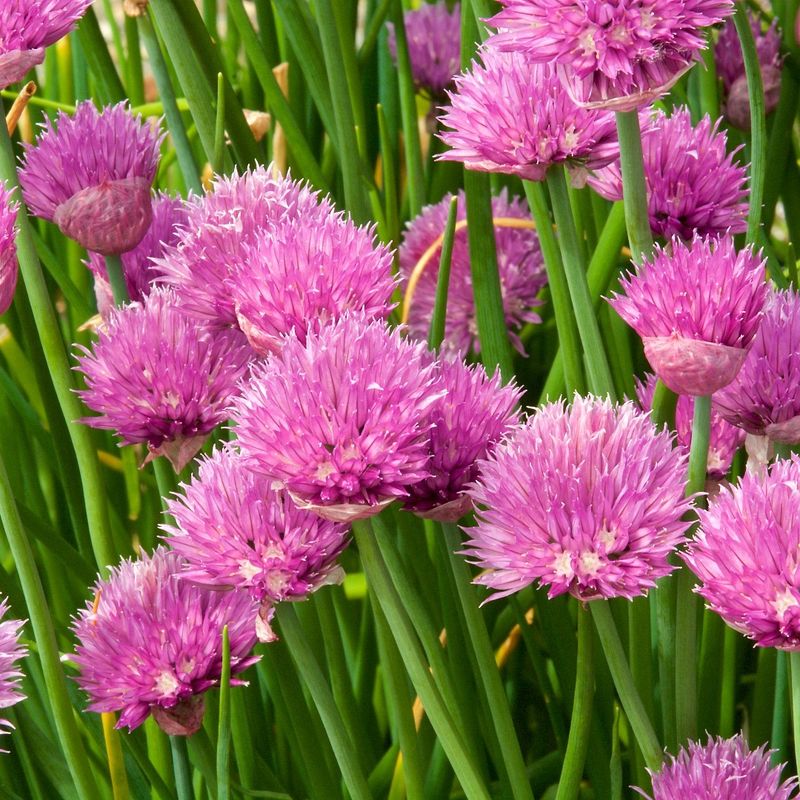
Those slender, onion-flavored stalks aren’t just tasty—they’re also remarkably adaptable to lower light conditions. The pretty purple flowers that appear in spring aren’t just decorative; they’re edible too and make beautiful garnishes for salads and appetizers.
Growing in neat clumps that expand gradually each year, chives return reliably even after harsh winters. Their shallow roots make them ideal for containers on partially shaded patios or windowsills. Snip leaves regularly about an inch above soil level to encourage continuous fresh growth throughout the growing season.
5. Cilantro
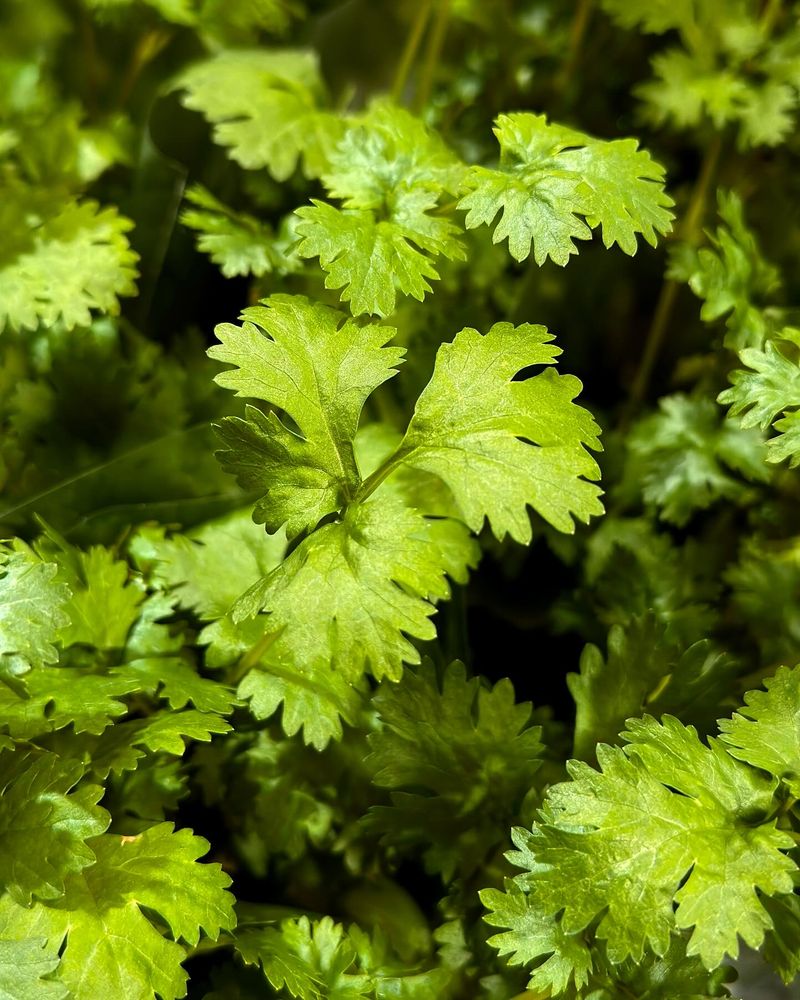
Love it or hate it, cilantro brings distinctive flavor to cuisines worldwide and actually performs better with some afternoon shade in warmer climates. This cool-season herb tends to bolt quickly in hot, sunny conditions, so partial shade helps extend its useful life before it goes to seed.
Succession planting every few weeks ensures a continuous harvest of fresh leaves. When it eventually flowers, don’t despair! Those flowers develop into coriander seeds—a different but equally valuable spice for your kitchen. The lacy foliage also attracts beneficial insects to your garden.
6. Thyme
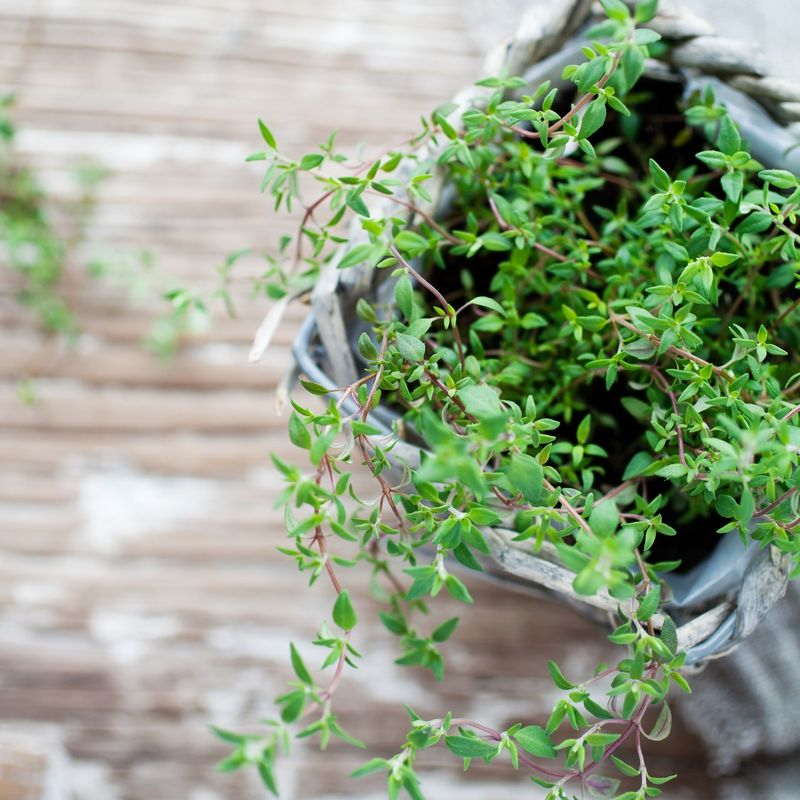
Small but mighty, thyme’s tiny leaves pack impressive flavor even when grown in less-than-ideal light conditions. While it prefers full sun, it adapts surprisingly well to partial shade, especially in hotter climates where afternoon protection actually benefits this Mediterranean native.
Low-growing varieties make excellent ground covers between stepping stones or at the edges of garden beds. The woody stems become more pronounced with age, so consider replacing plants every few years. Harvest sprigs any time, but flavor peaks just before flowering when essential oil concentration is highest.
7. Tarragon

French tarragon’s distinctive anise-like flavor remains robust even when grown in dappled shade. Unlike many herbs that become leggy in low light, tarragon maintains its elegant form with minimal direct sunlight, producing aromatic leaves perfect for flavoring vinegars and classic French dishes.
This perennial herb appreciates afternoon shade in warmer regions, which helps prevent stress during summer heat. Harvest stems regularly to encourage bushier growth and prevent the plants from becoming too woody. Fresh leaves have significantly more flavor than dried, making this a particularly valuable herb to grow yourself.
8. Sweet Woodruff
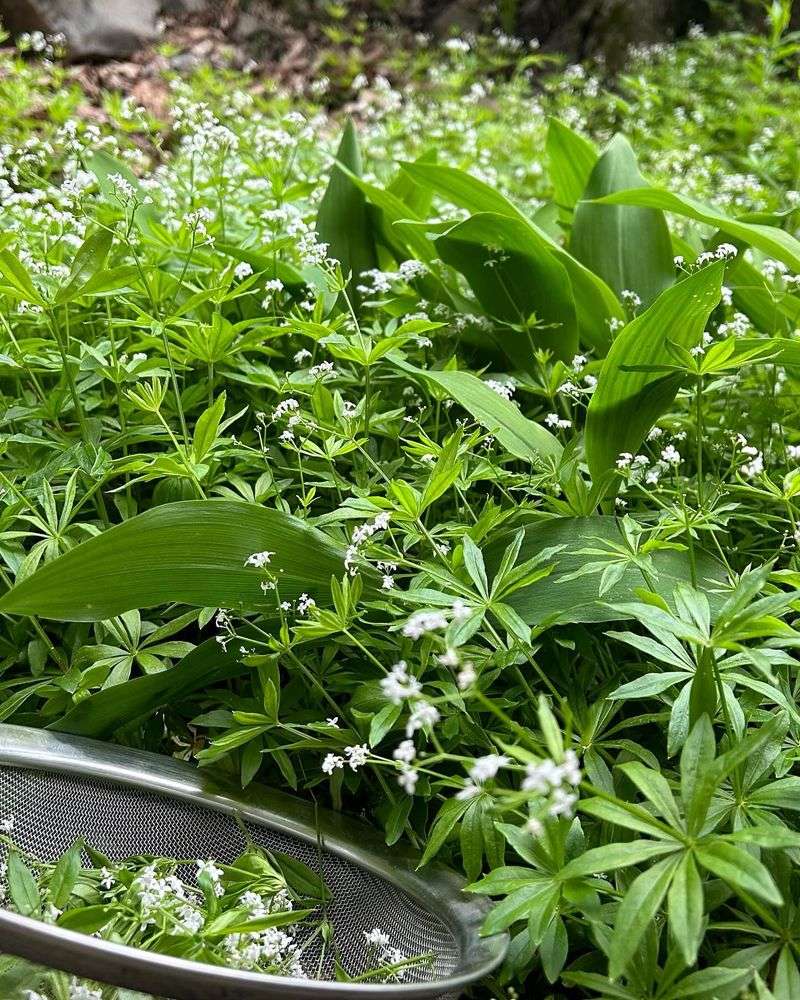
With delicate white flowers and whorled leaves that smell like fresh hay when dried, sweet woodruff thrives in the shadiest garden spots. This old-world herb creates a beautiful ground cover under trees or shrubs where few other plants grow well, spreading slowly through underground runners.
Traditionally used to flavor May wine in Germany, the leaves develop a stronger vanilla-like scent after being harvested and dried. In medieval times, people scattered the fragrant leaves on floors as a natural air freshener. Plant it once and enjoy its spreading habit for years with almost no maintenance.
9. Chervil
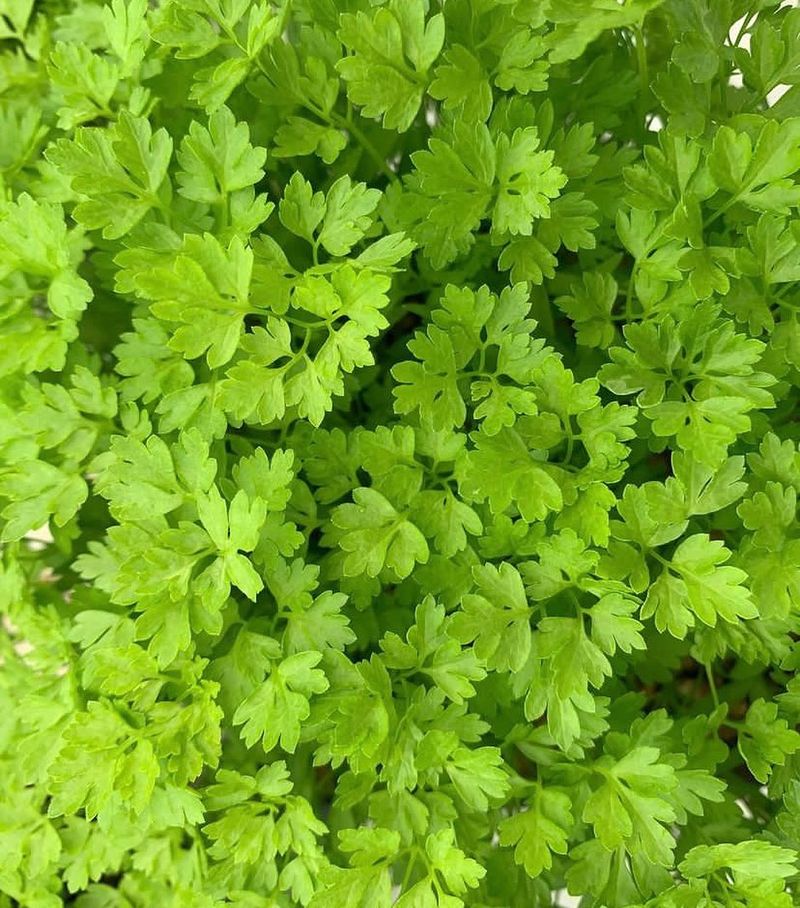
Often called French parsley, chervil brings delicate anise flavor to dishes and actually prefers growing in cool, shaded spots. The lacy, fern-like foliage wilts quickly in direct sun but thrives in locations with minimal sunlight, making it perfect for north-facing gardens or spots with morning sun only.
This refined herb is a classic ingredient in fine French cuisine, particularly in the herb mixture fines herbes. Direct sow seeds where you want them to grow, as chervil resents transplanting. For continuous harvest, plant new batches every few weeks throughout the growing season.
10. Lovage

Towering to impressive heights, lovage brings intense celery flavor from its leaves, stems, and seeds—all while tolerating partial shade. This overlooked perennial herb creates dramatic vertical interest in garden beds while requiring minimal care once established.
The hollow stems have traditional uses as natural straws for tomato-based drinks. Young leaves carry the strongest flavor and make excellent additions to soups and stews. As plants mature over several years, they develop substantial root systems that help them withstand periods of drought while still producing abundant foliage even in less-than-ideal light conditions.
11. Angelica

With its dramatic height and umbrella-like flower clusters, angelica makes a stunning architectural statement in shadier spots where few flowering herbs thrive. This biennial plant produces enormous, aromatic leaves in its first year, followed by impressive flowering stalks that can reach six feet tall.
Historically valued for medicinal properties, angelica is now primarily used to flavor liqueurs and candies. The hollow stems can be candied for cake decorations, while the seeds add complexity to homemade gin infusions. Plant it in moist, rich soil where it will receive morning sun but afternoon shade for optimal growth.
12. Oregano
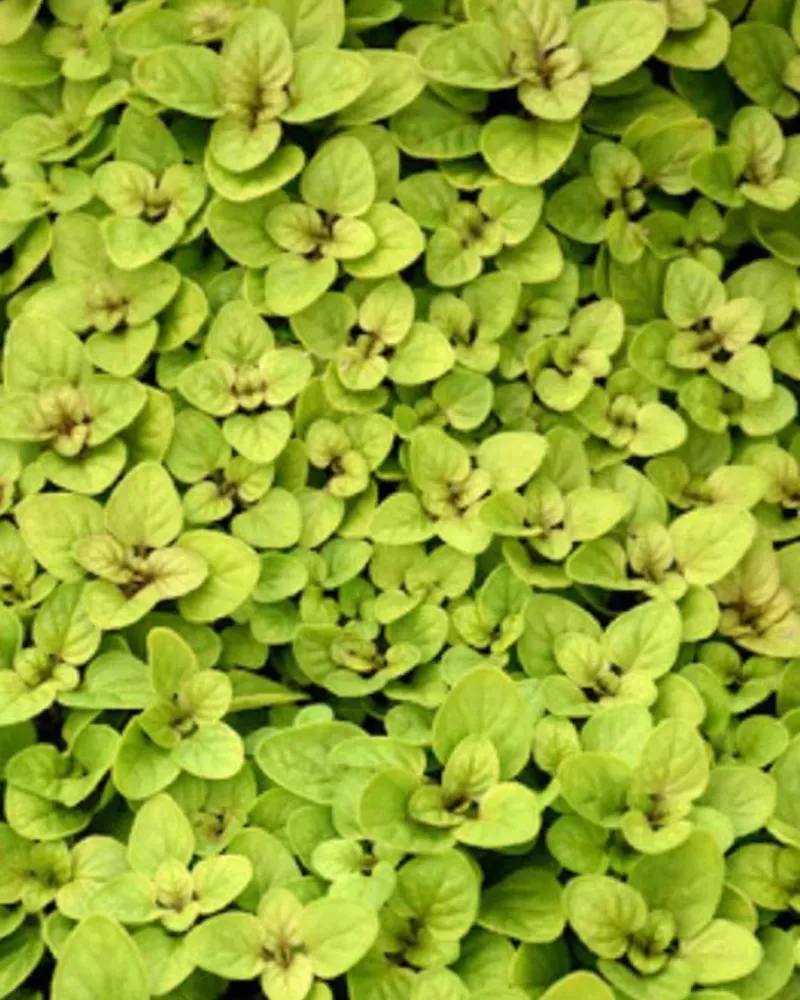
While oregano typically loves sunshine, golden varieties adapt beautifully to partial shade, bringing bright color and Mediterranean flavor to less sunny spots. The variegated leaves add visual interest to herb gardens while still providing plenty of that distinctive pizza-enhancing taste we all recognize.
This perennial spreads gradually to form attractive mounds of fragrant foliage. Harvest just before flowering for maximum flavor intensity. Pinch back growing tips regularly to encourage bushier growth and prevent legginess that sometimes occurs in lower light conditions. Even with less sun, the essential oils remain potent.
13. Sorrel

The bright, lemony tang of sorrel leaves brings zesty flavor to salads and soups, and this underappreciated herb actually prefers growing in cool, partially shaded locations. The arrow-shaped leaves contain natural acids that create their distinctive sour taste, similar to rhubarb but in a leafy form.
French sorrel varieties offer more refined flavor than their wild cousins. Harvest young leaves for the mildest taste, as older ones become increasingly acidic. This perennial returns reliably year after year, often being among the first greens available in early spring when few other herbs have emerged.
14. Bay Laurel
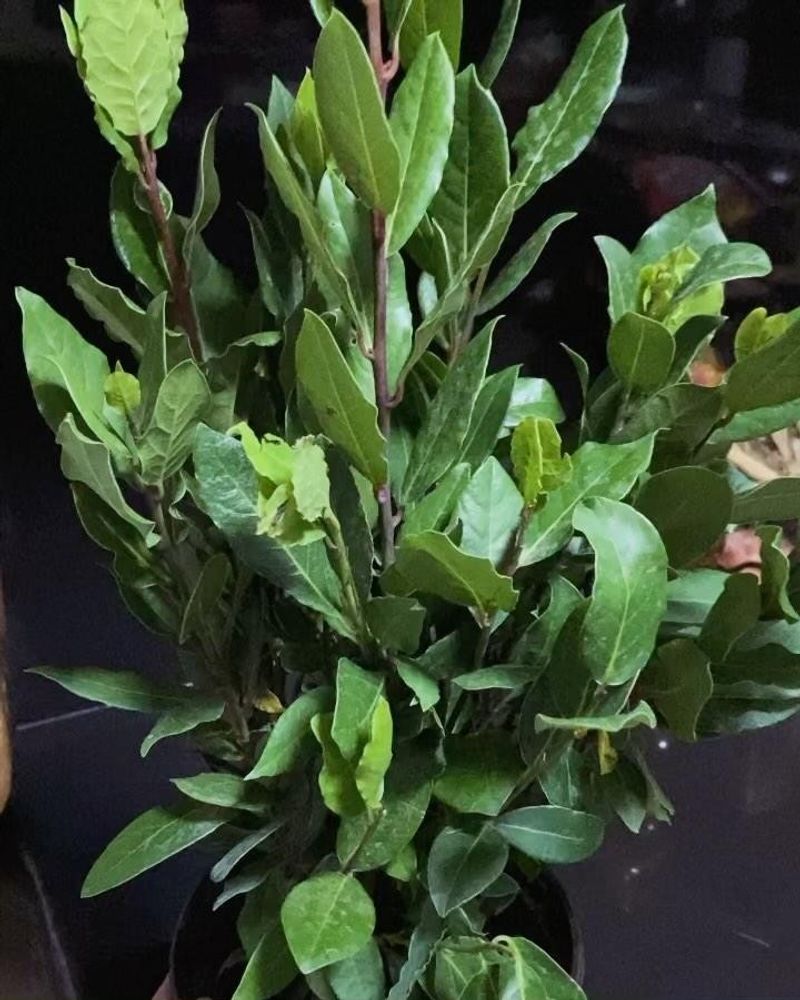
Those aromatic bay leaves essential for soups and stews come from a small tree that adapts surprisingly well to partial shade when grown in containers. While naturally preferring Mediterranean sunshine, potted bay laurel can thrive with just a few hours of direct light daily.
Slow-growing but long-lived, a single plant provides years of fresh leaves superior to dried store-bought versions. Pruning maintains an attractive shape and manageable size for container growing. Bring potted specimens indoors during winter in colder climates, placing them near a bright window where they’ll continue producing flavorful leaves year-round.
15. Ginger

Fresh ginger root brings warming zing to cuisines worldwide, and this tropical treasure actually prefers growing in filtered light rather than harsh direct sun. The elegant reed-like foliage makes an attractive ornamental addition to partially shaded garden beds in warmer climates.
Start with plump, fresh rhizomes from grocery stores, planting them just below the soil surface in spring. Harvest by carefully digging around the edges of the plant once leaves begin to yellow in fall. In cooler regions, grow ginger in containers that can be brought indoors before frost, extending your harvest season.

